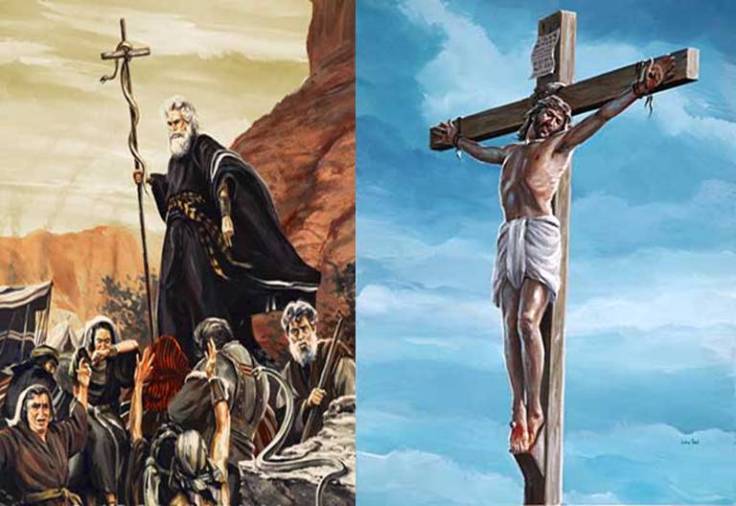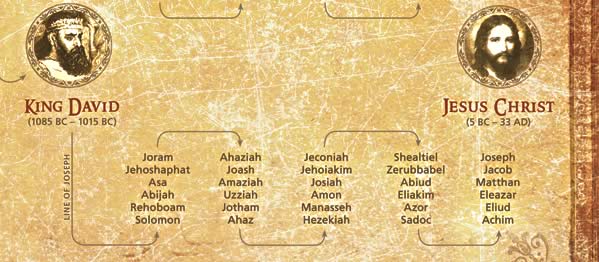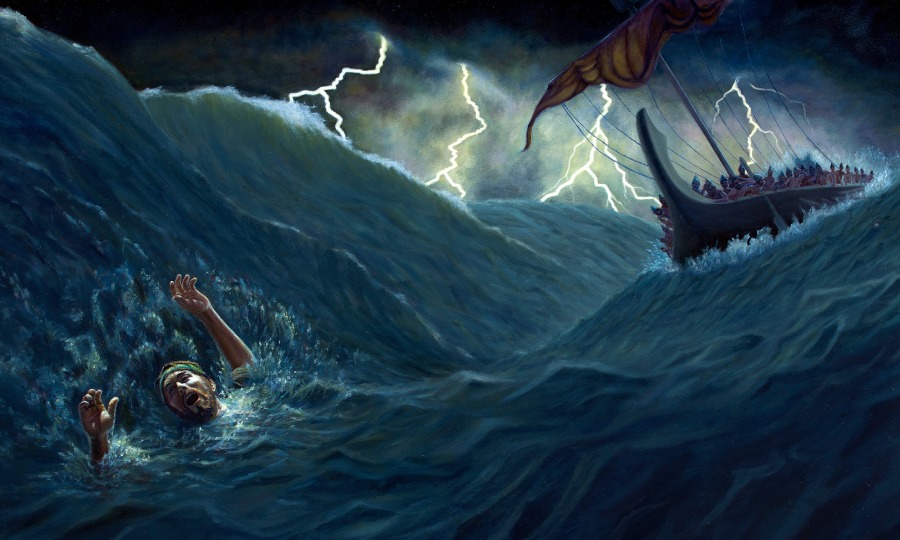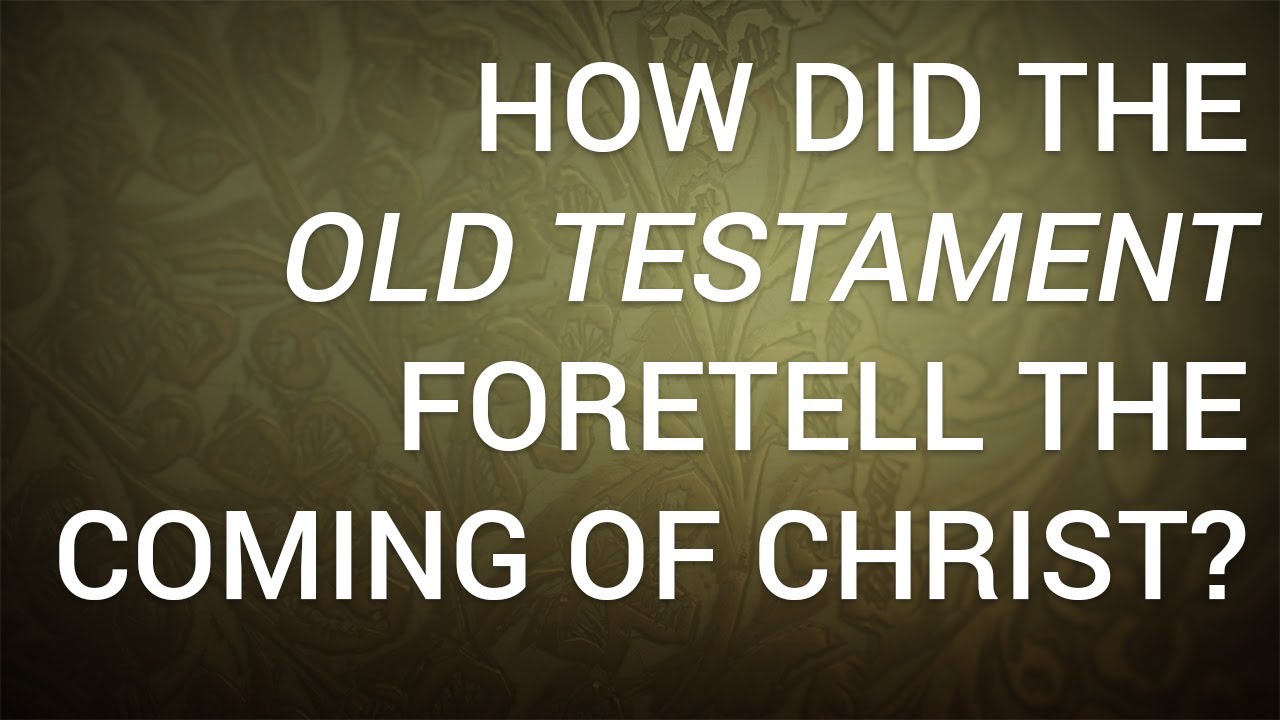3 Prophecies Prefiguring the Coming of Christ
Imagine a world searching for a different kind of horizon. One that has nothing to do with politics, wealth or status – only Christ.
A world only searching for God. Wanting to know above all, the day of Christ’s return. God’s grace would surely overflow, filling the ends of the earth. Turning to the Old Testament, we have numerous prophetic events that prefigured Christ’s entry into the world. Unfortunately, the world did not heed their prophetic significance. Instead, they rejected the one whom God sent – Christ.
In the New Testament, Christ reveals the meaning of Old Testament prophecy. And, the only begotten Son of God fulfills all that was foretold with exacting precision.
Jesus reveals Himself as the key to understanding the Old Testament.
Three Significant Old Testament Events Foretelling the Coming of Christ
Foretelling 1: The Bronze Serpent Moses “Lifted Up” to Heal the People
Theologically, we refer to biblical persons or central events that prefigure his paschal mystery as biblical typology. These are significant people, objects, events or prophetic words that foreshadow a greater Christ salvation event in the New Testament. In our first example, we return to the land of Edom where the Israelites were once again failing to remember God’s saving grace. Their loud complaints about the lack of food, water and distaste for God’s manna sent ungrateful echoes to heaven.
Displeased, God released biting serpents as punishment. Their poison brought death with every painful jab. It was not long before the people cried out to Moses in repentance. After praying for them, Moses was instructed by the Lord to “Make a fiery serpent and set it on a pole; everyone who is bitten, when he sees it shall live” (Numbers 21:4-9). Moses obediently carried out the Lord’s command. As promised, the inflicted facing imminent death survived by looking upon the serpent of bronze uplifted by Moses. At the time, the people did not understand the symbolic significance held by the bronze serpent.
Jesus reveals the bronze serpent’s meaning to Nicodemus.
Christ reveals the meaning of the “raised up” bronze serpent to Nicodemus. He states “And as Moses lifted up the serpent in the wilderness, so must the Son of Man be lifted up, that whoever believes in him may have eternal life” (John 3:14-15). The lifting up of this object to save the sinners from death prefigures Christ who would be “lifted up” high on the Cross.
 Christ reveals in the New Testament how “bread” also prefigured his coming. According to John, Jesus was asked if He would also give the people a sign similar to the manna in the desert. The Israelites did not understand the significance of the bread or the source of its generation. Jesus corrects them and states “It was not Moses who gave you the bread; for the bread of God is that which comes down from heaven and gives life to the world. I am the bread of life” (John 6).
Christ reveals in the New Testament how “bread” also prefigured his coming. According to John, Jesus was asked if He would also give the people a sign similar to the manna in the desert. The Israelites did not understand the significance of the bread or the source of its generation. Jesus corrects them and states “It was not Moses who gave you the bread; for the bread of God is that which comes down from heaven and gives life to the world. I am the bread of life” (John 6).
Christ shows us that the manna keeping the Israelites alive foreshadowed His Paschal Mystery. Christ’s Body and Blood in the Eucharist is spiritual bread – being true God and true man – nourishing the faithful in sanctifying grace and charity, by which we gain eternal life.
Foretelling 2: The Messiah Would Come from the Line of David
From a lineage perspective, Solomon was the son of David. According to the Prophet Isaiah, Christ the anointed would come from the line of David (Isaiah 11:1-3). Bridging ahead to Matthew’s Gospel, we encounter Christ’s Davidic heritage in the first verse. It states “the book of the generation of Jesus Christ, son of David, the son of Abraham” (Matthew 1:1).
Fourteen generations later, Joseph would emerge from David’s family line to become the husband of Mary (Matthew 1:16). In another example, we discover that the meaning of the name ‘Solomon’ as ‘bringer of Peace’ also prefigures our Lord, the true Solomon and the true bringer of peace (Augustine).

Finally, in the Second Book of Chronicles, we are told that “Solomon began to build the house of the Lord [the Temple] in Jerusalem on Mount Moriah” (2 Chr 3:1). The Temple and all its sacrifices were constructed on the very place where Abraham said that God would provide the lamb for the sacrifice (Genesis 22:8). Israel waited for the time that God would send forth his lamb. In John’s Gospel, John the Baptist proclaims that God is now fulfilling his promise to provide the lamb when he sees Jesus and announces, “Behold, the Lamb of God, who takes away the sin of the world” (Jn 1:29). It is Christ, the only begotten Son of God who will take away all sins by laying down his life for us at Golgatha.
The Book of Jonah
Foretelling 3: Christ gives the “Sign” of the Prophet Jonah extraordinary significance.
 The Pharisees are pressing Him to deliver a sign to prove his divinity. They knew Christ’s true identity having already seen Christ perform many miracles. Instead of becoming followers, they accuse Christ of casting out demons. Reproving them, Christ states “there shall be no sign given but the sign of the Prophet Jonas” (Mt 12:39). Then, He unfurls the prophetic meaning of Jonah’s suffering sea voyage and registers the events and symbols with his own death, Resurrection and conversion of the Gentiles.
The Pharisees are pressing Him to deliver a sign to prove his divinity. They knew Christ’s true identity having already seen Christ perform many miracles. Instead of becoming followers, they accuse Christ of casting out demons. Reproving them, Christ states “there shall be no sign given but the sign of the Prophet Jonas” (Mt 12:39). Then, He unfurls the prophetic meaning of Jonah’s suffering sea voyage and registers the events and symbols with his own death, Resurrection and conversion of the Gentiles.
How incredible it would have been to be among the crowd listening to Christ uncover the meaning of Jonas’ three day and night existence inside the bowels of a beastly whale. Christ reveals that it prefigures his own death stating “so shall the Son of Man be three days and three nights in the heart of the earth. The men of Nineveh will arise at the judgment with this generation and condemn it because they repented at the preaching of Jonah. Behold, something greater than Jonah is here.”
Looking at Jonah’s suffering voyage, he prays to God, pleading to remove the weeds and thorns that wrapped around his head as he was tossed at sea. They clearly prefigure the crown of thorns placed on Christ’s head as instrument of torture (Mt 27:29).
Just as Jonah is willing to sacrifice himself to save his crew, so will the Crucified Son of God – “the lamb who takes away the sins of the world” (Jn 1:29).
Biblical typology spectacularly reveals the sacred relationship between the Old and New Testament.
Bridging both books to understand how Christ fulfills the ancient Scriptures is God’s call for every Christian. Reflecting on the bronze serpent, manna, King Solomon and the Prophet Jonah collectively reveal the prefiguring of the coming of Christ with exacting precision. The people and events woven within each prophecy powerfully lay the foundation for the coming of the One whose “Name is above every name” – Jesus Christ (Phil 2:9-10).

